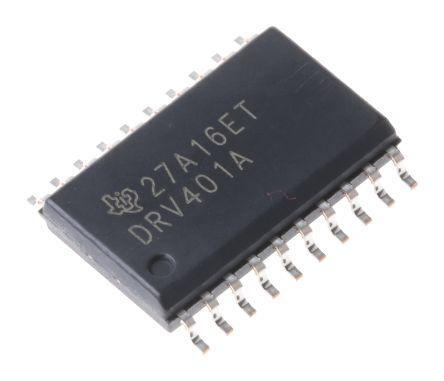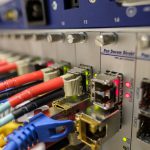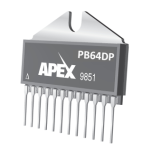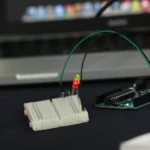
Texas Instruments (TI)
Texas Instruments is known for manufacturing optimized solutions for modern day design challenges. The impacts of its products like sensor, in driving innovation is evident in IoT, self-driving cars and even smart buildings. Texas Instruments understand that the hallmark of every groundbreaking innovation is its ability to sense. TI manufactures innovative sensors that accurately deliver information from the physical environment to the digital frontier. Listed below is a portfolio of TI’s quality sensors;
- Hall effect
- Capacitive
- Current
- Gas/Chemical
- Humidity
- Inductive
- Optical
- Pressure
- Temperature
Hall effect sensors
Hall effect sensors are used to detect magnetic fields. It detects both its presence and strength. The presence and strength of the magnetic field are used to indicate either distance or position without contact. TI manufactures three types of Hall-effect sensors as listed below;
- Digital latch hall-sensor (DRV5013)
- Switch hall-effect sensor (DRV5023)
- Digital Omnipolar-switch hall effect sensor (DRV5033)
- Analog Bipolar Hall-Effect Sensor(DRV5053)
These Hall-Effect sensors all have them except for the degree of sensitivity. Otherwise, the features listed below remain similar;
- Linear output Hall sensor
- Superior temperature stability (sensitivity ±10% over temperature)
- Detect North and South Magnetic field
- Support for a wide range of voltage (2.5 to 38V)
- Wide operating temperature range ( -40 to 125°C)
Sensitivity options vary from one type of sensor to another.
Capacitive sensors
Capacitive sensing with a grounded capacitor offers high-resolution, and contactless technique of sensing that can be used in numerous applications. TI manufactures a variety of capacitive sensors as listed below;
- MSP30FR263x/253x
- FDC2X1X
- FDC1004
They all have diverse features hence you might need to study all of them keenly to establish which ones fit your project well.
Current Sensors
Current sensors are either current shunt monitors or current sense amplifiers that are designed to monitor the flow of current in a load. It achieves this by measuring the voltage across a resistor. Current sensors have a unique input stage topology that permits the common-mode voltage to surpass the supply voltage. TI manufactures the following current Shunt monitors;
- INA300
- INA282
- INA226
- INA210
- INA215
Gas/Chemical sensors
There are two techniques used to detect gas, the electrochemical cell, and the NDIR sensing. Electrochemical sensors generate potential and then measures the current across a cell that responds to a specific gas type. NDIR sensors on the hand use infrared light to establish the volume of a specific gas in a container. Below are TI’s gas/chemical sensors;
- LMP91000
- LMP91050
- DLP4500NIR
Humidity sensors
Humidity sensors are used to determine the amount of moisture present in the air. Relative humidity is a function of temperature hence humidity sensors incorporate temperature sensors. Below is TI’s humidity sensor portfolio;
- HDC1080EVM
- HDC1008EVM
- HDC1000EVM
Inductive Sensors
Inductive sensors measure position, motion, and composition of a metal or a conductive material in a contactless manner. They also detect the compression, extension, or twist of a spring. Inductive sensors are immune to interference like oil, water or dirt thus allowing for sensing in harsh environments. Below are TI’s inductive sensors;
- LCD161x
- LCD131x
- LDC1000
- LDC1041
- LMP91300
Optical Sensors
Optical sensing converts light rays into electronic signals. They measure either the intensity of light or the changes between one or more light beams. Texas Instruments offers the following optical sensors;
- OPT3001
- DLP4500NIR
- DLP4500
Pressure sensors
Whichever pressure sensor you use, pressure signal conditioners deliver very precise and programmable solutions that enable to accurately measure pressure. TI offers the following signal conditioners;
- PGA308
- PGA309
- PGA400-Q1
Temperature sensors
Silicon PN junction exhibits highly predictable linear properties from which temperature sensors derive their accuracy. Temperature sensors offer high accuracy without zero calibration in the end system. They can be integrated and monitored using numerous multi-option channels. TI offers the following multichannel options,
- TMP107
- TMP007
- LMT84
- LM57
- LM20
- TMP175
- TMP451





















